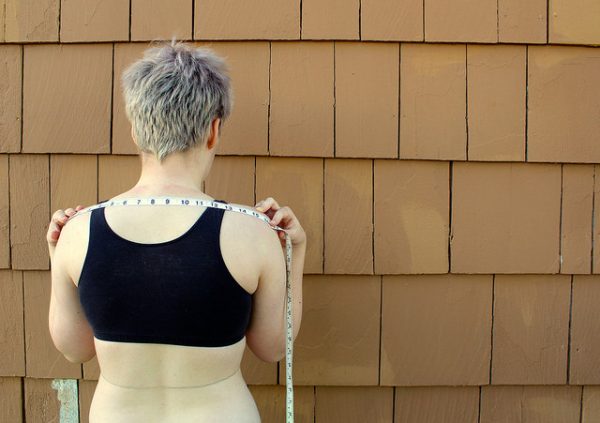
While consumers are aware that sizing for women’s clothing varies by company and even item, women still use clothing sizes to assess how their bodies meet cultural beauty standards. Rather than writing off the anxieties about buying that perfect dress with statements like “size doesn’t matter,” or “nobody can see the tag!” it is important to take the material and psychological consequences seriously that women experience when navigating clothing choices. Clothing not only communicates the latest styles, but also whose bodies are “in” or “out.” In order to understand how clothing sizes impact women’s identities and inequalities between them, Katelynn Bishop, Kjerstin Gruys, and Maddie Evans combined their three existing research projects on women’s clothing.
The researchers observed brick and mortar stores and conducted interviews with consumers and store employees at three different sites — a specialty bra boutique, a bridal salon, and a chain ready-to-wear store specifically for plus-sized women. Because this project grew from three separate initiatives, the data for the bra store comes primarily from interviews, the data from the ready-to-wear-store comes mostly from ethnographic observation and the data from the bridal salon comes from a mix of the two methods.
Depending on what sizes women could wear, they experienced different consequences. Plus-sized women were more likely to feel stigma for having to wear larger sizes. They also had fewer choices of merchandise in stores than “straight-size” (non-plus size) women and sometimes had to shop at different stores entirely. Further, bras and bridal wear in plus sizes often cost more money, increasing the economic barrier to purchase these. Women who were between size categories, particularly between a “straight” and plus size, sometimes avoided even trying the larger size item because of the stigma of wearing a plus-size. When these inbetweeners were able to wear the non-plus size options, they reaped material privileges of more clothing choices and psychological benefits of distancing themselves from the stigmatized plus-size category. In short, clothing sizes are more than just numbers, they mark women as in or out, and women use sizes strategically to avoid stigma.

Comments